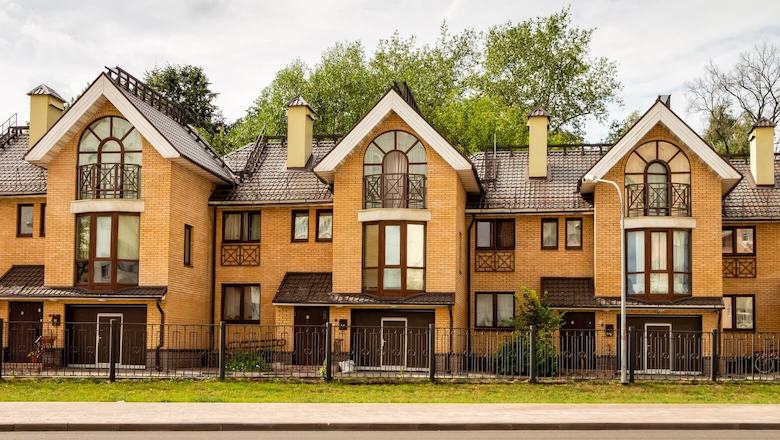How to Get a Mortgage in 2024
Getting a mortgage can be one of the biggest financial undertakings a person can make. What’s more, it also unlocks the path to what is typically the biggest asset and wealth builder out there: a home of your own.
Whether you’re dreaming of a center hall Colonial or a cool, loft-style condo, the odds are, you will need a mortgage to make home ownership happen. But these days, with mortgage rates rising, snagging that home loan can require a little more knowledge and preparation.
This guide will help you get up to speed and ready your application. Read on to learn:
• How to get a mortgage right now
• What matters most to lenders
• What are the typical mortgage requirements
• What steps are needed to get a mortgage
What Mortgage Lenders Look At
A good first step to getting a mortgage is to understand how you will be evaluated by lenders so you can put your best foot (or financial profile) forward. Consider the following:
Your Credit Score
Your credit score is an important number: It tells lenders how well you have managed debt in the past. Ideally, you have a good history of paying your bills on time. If, however, you have been late with payments or have defaulted in the past, your credit score may be a red flag as you apply for a mortgage.
• Typically, you will need a credit score of 620 or higher to qualify for a conventional home loan.
• However, those with scores of 740 or higher may snag the best (meaning lower) rates.
• If your score is at least 580, you may qualify for a government-backed loan (more on those below). Even those with a credit score of 500 to 579 may be eligible in some cases.
If you’d like to build your credit score, try these steps:
• Get a free credit report (one per year) from www.annualcreditreport.com. It will include bill payment history, current debt, and other information lenders typically check on. If you see any errors, report them.
• Be impeccable with payment deadlines. The timeliness of your payments is the largest contributing factor to your credit score, so optimizing this area can have a positive impact.
• Manage any situations where you owe money. Unpaid bills that linger and go from 30 to 60 to 90 days (or more) late can bog down your credit score. Prioritize paying overdue bills.
Your credit score is important: The higher your score, the more reliable and creditworthy you appear.
Debt-to-Income Ratio
Another number that lenders will be interested in is your debt-to-income (DTI) ratio. This shows how the amount of debt you are carrying relates to your income. Here’s how DTI is calculated:
• Total your monthly minimum debt payments, such as student loans, car loans, credit-card bills, current rent or mortgage and property taxes, and the like.
• Divide that total debt number by your gross monthly income (that is, before taxes and other deductions are siphoned off).
• The resulting number is your DTI.
The DTI figure that lenders look for may vary. Some lenders want to see 36%; others will be comfortable with up to 43%. Government-backed loans are likely to accept higher DTI’s than other lenders.
Why does DTI matter? Lenders want to see that you can handle the financial burden of a mortgage without struggling.
Income History
Lenders want to see signs of a positive, stable income. Ideally, you have been employed for at least two years and your income is steady, if not trending upward.
This tells lenders that you are a person they can count on to pay back the funds you borrow. If you have been out of work or have job-hopped recently, it might be wise to wait a bit before applying for a mortgage until you can show the income history that lenders want to see.
Assets
Lenders will likely want to see that you have some assets available, such as cash in the bank or other fairly accessible funds. This is where a healthy emergency fund and money saved for a down payment can be a real boost.
These kinds of savings can reassure a lender that you are ready to buy and, even if you were hit with a major expense or were laid off, you could still pay your monthly mortgage and stay current on your home loan.
Property Type
The kind of property you are planning to buy may make a difference to lenders as well. For instance, if you are seeking to buy a single-family home that will be your primary residence, you may look more attractive to lenders than someone who already has a primary home and is buying a ski condo they will rent out on Airbnb. The former could seem more motivated to stay current on their mortgage payments than the latter.
💡 Quick Tip: Don’t overpay for your mortgage. Get your dream home or investment property and a competitive rate with SoFi Mortgage Loans.
Get Familiar With the Required Mortgage Documents
Now that you know how lenders size you up for a loan, consider the documents that you will likely need to apply for a mortgage:
• Proof of income: Get ready to break out those W-2s, 1099s, and tax returns. The lender will need solid proof of your recent income.
• Credit documentation: You will likely sign a release allowing the lender to review your credit report to assess your history on that front.
• Proof of assets and liabilities: You will probably need to share bank statements, investment account statements, and other documents to verify what assets you have. Your lender may want to see paperwork regarding any student or auto loans and other debts as well.
These forms allow a lender to consider your level of financial security and whether you are a good risk to offer a mortgage loan.
How to Get a Mortgage: 9 Steps
Now that you understand the paperwork you need and how lenders will look at your qualifications for a mortgage, consider the steps required to actually get the loan you need to buy a home.
1. Checking Your Credit
As mentioned above, it’s wise to check your credit score and review your credit report. If your number and record aren’t optimal, take the necessary steps to improve the situation, such as diligently paying bills on time, clearing up any errors on your record, and taking care of any debt that’s past due.
2. Figuring Out Your Home-Buying Budget
As you contemplate buying a home, develop a budget. You want to be sure that you have an adequate down payment and can afford your monthly mortgage payment. But don’t overlook these costs that need to be part of your budget:
• Closing costs and related expenses
• Funds to make any repairs/renovations required
• Moving expenses
• Home insurance premium
• Property taxes
• Utilities (especially important if you are moving from a rental where your landlord paid some of these costs to your own home)
• Maintenance and upkeep costs (landscaping, HVAC service, etc.)
These expenses should be tallied and accounted for; you don’t want to wind up with your heating bill becoming a reason to use your emergency fund.
3. Saving for the Down Payment and Closing Costs
One important element of your home-buying budget is the down payment plus closing costs. Here’s how much you are probably going to need to set aside:
• Down payments for a conventional loan have traditionally been 20% of a home’s cost, but there is some flexibility. A recent survey by the National Association of Realtors found that first-time homebuyers typically put down 8% on a home purchase.
• Keep in mind that if you put down less than 20%, you will likely have to pay private mortgage insurance (PMI), since your lender may want extra protection in case you default on your loan.
• Some loans are available with as little as 3% down or even (for government-backed ones) zero money down.
• Closing costs will likely amount to 3% to 6% of the loan amount. They include fees for processing your loan, home appraisal, title search, and other activities.
4. Choosing the Right Mortgage Option
It’s worth reviewing some of the different loans that you may qualify for.
• Conventional vs. government-backed loans. Conventional loans typically have stricter income, credit score, and other qualifying factors, while government-backed loans may be easier to obtain. Government-backed loans may have lower (or even no) down payment requirements. Examples of these government loans are FHA, VA, and USDA loans.
• Type of rate: For some borrowers, a fixed-rate loan, with its never-varying monthly payment, may be best. For others, an adjustable-rate one that fluctuates may be more appealing. The payments tend to start out low, which can be attractive for those who may sell their home within a few years’ time. You may also look into mortgage points, which involve paying more upfront to shave down your rate over the life of the loan.
• Mortgage loan term: Many loans last 30 years, but there are other options, such as 10, 15, or 20 years. The shorter the term, the higher your payment is likely to be.
💡 Quick Tip: Backed by the Federal Housing Administration (FHA), FHA loans provide those with a fair credit score the opportunity to buy a home. They’re a great option for first-time homebuyers.1
5. Comparing Mortgage Lenders
Next, it’s wise to review different mortgage lenders and see what kind of rates and terms are quoted. For example, your own bank may offer mortgages and could give you a good rate in an effort to keep your business with them. Or you might look into online lenders, where the process can be more streamlined and the rates possibly better than traditional options.
You might also decide to work with a mortgage broker to get help learning about your alternatives.
6. Getting Pre-Approved for a Mortgage
For this stage, you will begin your actual interaction with a lender. The goal is a preapproval letter, which can help you as you go home shopping and bid on properties. While not a guarantee of a mortgage, it shows you are serious about buying and are on the path to securing your funding, and it reflects that the lender found you qualified for a mortgage.
You can expect the lender to do a credit check, verify your income and assets, and consider your DTI. If all goes well, the lender will provide you with a preapproval letter, and you can shop for a home in the designated price range.
It can be wise to get preapproved by more than one lender. This can help you evaluate different offers and broaden your options when it’s time to apply for a loan.
First-time homebuyers can prequalify for a
SoFi Mortgage Loan, with as little
as 3% down.
7. Making an Offer on a Home
With your pre-approval letter done, you are ready to go home shopping. As you tour properties and make offers, you are on your way to getting to an accepted offer. When that happens (a big moment!), you will hopefully be on the path to home ownership. If contract negotiations and the inspection goes well, you will likely move along to the next step.
8. Applying for a Mortgage
Next, it’s time for the full-fledged mortgage application. Expect to submit the following, and possibly more:
• Two years’ worth of W-2 forms or other income verification
• A month’s worth of pay stubs
• Two years’ worth of federal tax returns
• Proof of other income sources
• Recent bank statements and documentation of possibly recent sources of deposits
• Documentation of funds/gifts of money to be used as your down payment
• ID and Social Security number
• Details on debt such as student loans and car payments
9. Closing on a Home
As you wait for your closing date, a home appraisal, loan underwriting, title searches, and more are happening. If things progress smoothly, you will be ready to close on your home. You also may wish to bring your real estate agent and/or attorney with you to this meeting. They can help explain everything — especially valuable if you are a first-time homebuyer.
You will gather to sign all your forms, submit your down payment and closing costs (or provide proof of wire transfer), and become a homeowner. Congratulations!
The Takeaway
The path to home ownership can be a long and winding road but worth it as you gain what could be your biggest financial asset. By preparing to present a credit-worthy file and following the steps needed to apply for a home mortgage, you can be on your way to owning your dream house.
Looking for an affordable option for a home mortgage loan? SoFi can help: We offer low down payments (as little as 3% - 5%*) with our competitive and flexible home mortgage loans. Plus, applying is extra convenient: It's online, with access to one-on-one help.
FAQ
How do you improve your chances of getting approved for a mortgage loan?
You can improve your chances of getting approved for a mortgage by checking on your credit score (and improving it, if necessary), showing a debt-to-income ratio of ideally 36% or lower, and having two years’ of a steady job history.
How do I begin a mortgage?
The first step in getting ready to apply for a mortgage can involve checking up on your financial profile to see how it will look to potential lenders and optimizing it. You can then research different kinds of loans and their requirements and get pre-approved by one or more lenders to see what you qualify for. When you have found a home and are ready to apply for your mortgage, you’ll gather the credentials you’ll need (such as proof of income and assets, tax returns, and ID) and fill out your application.
What is the lowest income to qualify for a mortgage?
There is no one set income required to qualify for a mortgage. Much will depend on how much you want to borrow versus your income, how much debt you are carrying, and your credit score. For those who have a lower income, there are government-backed loans that may be suitable; it can be worthwhile to look into FHA, USDA, and VA loans to see what you might qualify for.
What credit score is needed to get a mortgage?
Typically, a credit score of at least 620 is required for a conventional loan, and the higher your score (say, in the 700s or higher still), the more loan options and lower rates you may find. For those with a credit score of at least 580, there are government-backed loan products available.
¹FHA loans are subject to unique terms and conditions established by FHA and SoFi. Ask your SoFi loan officer for details about eligibility, documentation, and other requirements. FHA loans require an Upfront Mortgage Insurance Premium (UFMIP), which may be financed or paid at closing, in addition to monthly Mortgage Insurance Premiums (MIP). Maximum loan amounts vary by county. The minimum FHA mortgage down payment is 3.5% for those who qualify financially for a primary purchase. SoFi is not affiliated with any government agency.
*SoFi requires Private Mortgage Insurance (PMI) for conforming home loans with a loan-to-value (LTV) ratio greater than 80%. As little as 3% down payments are for qualifying first-time homebuyers only. 5% minimum applies to other borrowers. Other loan types may require different fees or insurance (e.g., VA funding fee, FHA Mortgage Insurance Premiums, etc.). Loan requirements may vary depending on your down payment amount, and minimum down payment varies by loan type.
SoFi Loan Products
SoFi loans are originated by SoFi Bank, N.A., NMLS #696891 (Member FDIC). For additional product-specific legal and licensing information, see SoFi.com/legal. Equal Housing Lender.
SoFi Mortgages
Terms, conditions, and state restrictions apply. Not all products are available in all states. See SoFi.com/eligibility for more information.
Financial Tips & Strategies: The tips provided on this website are of a general nature and do not take into account your specific objectives, financial situation, and needs. You should always consider their appropriateness given your own circumstances.
Disclaimer: Many factors affect your credit scores and the interest rates you may receive. SoFi is not a Credit Repair Organization as defined under federal or state law, including the Credit Repair Organizations Act. SoFi does not provide “credit repair” services or advice or assistance regarding “rebuilding” or “improving” your credit record, credit history, or credit rating. For details, see the FTC’s website .
Tax Information: This article provides general background information only and is not intended to serve as legal or tax advice or as a substitute for legal counsel. You should consult your own attorney and/or tax advisor if you have a question requiring legal or tax advice.
Third-Party Brand Mentions: No brands, products, or companies mentioned are affiliated with SoFi, nor do they endorse or sponsor this article. Third-party trademarks referenced herein are property of their respective owners.
External Websites: The information and analysis provided through hyperlinks to third-party websites, while believed to be accurate, cannot be guaranteed by SoFi. Links are provided for informational purposes and should not be viewed as an endorsement.
SOHL0124008
Read more



